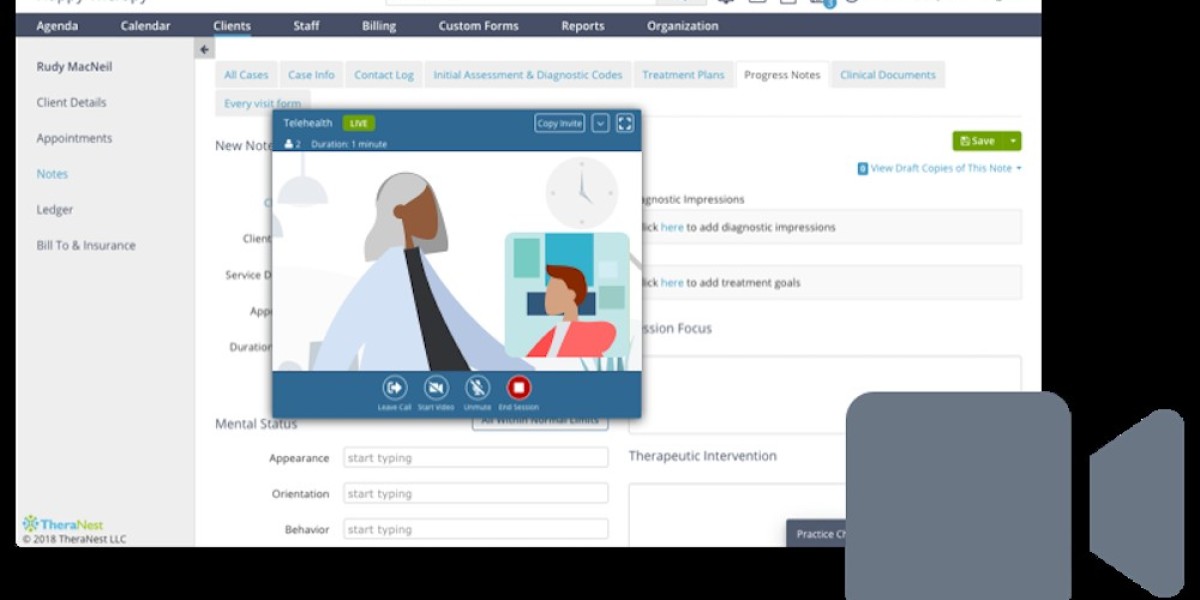In recent years, telehealth platforms have emerged as essential tools for therapists, offering innovative solutions for delivering mental health services remotely. These platforms facilitate virtual therapy sessions, counseling, and interventions, enabling therapists to connect with clients from any location and provide support and treatment effectively. In this comprehensive guide, we'll explore the transformative impact of telehealth platforms for therapists, examining their features, benefits, and best practices for leveraging these technologies to enhance mental healthcare delivery.
The Rise of Telehealth Platforms for Therapists
Telehealth platforms have gained popularity among therapists and mental health professionals as a means of expanding access to care, overcoming geographical barriers, and meeting the evolving needs of clients. With the increasing demand for mental health services and the growing acceptance of remote care delivery, telehealth platforms have become indispensable tools for therapists seeking to provide high-quality care to their clients in a convenient and accessible manner.
Key Features of Telehealth Platforms for Therapists
Video Conferencing: High-definition video conferencing capabilities enable therapists to conduct virtual therapy sessions with clients in real-time. Video conferencing features replicate the experience of in-person sessions, allowing therapists to observe nonverbal cues, establish rapport, and engage in therapeutic interventions effectively.
Secure Messaging: Secure messaging functionality enables therapists and clients to communicate asynchronously between sessions, exchanging messages, resources, and homework assignments securely. Secure messaging fosters ongoing communication, support, and accountability, enhancing the therapeutic relationship and treatment outcomes.
Appointment Scheduling: Appointment scheduling features streamline the process of booking and managing therapy appointments, allowing therapists to set their availability, schedule sessions, and send appointment reminders to clients. Automated scheduling reduces administrative burden and ensures that clients are informed and prepared for their virtual sessions.
Electronic Health Record (EHR) Integration: Integration with electronic health records (EHR) systems enables therapists to access and update client records, treatment plans, and session notes seamlessly. EHR integration ensures continuity of care, facilitates documentation, and supports informed clinical decision-making during virtual therapy sessions.
Therapy Tools and Resources: Some telehealth platforms offer built-in therapy tools and resources to support therapists in delivering evidence-based interventions and treatments. These tools may include assessments, worksheets, mindfulness exercises, and relaxation techniques to enhance the therapeutic process and engage clients in self-care activities.
Benefits of Telehealth Platforms for Therapists
Expanded Reach and Access: Telehealth platforms enable therapists to reach clients in remote or underserved areas where access to mental health services may be limited. Clients can receive therapy from the comfort of their homes, reducing barriers such as transportation, stigma, and scheduling conflicts.
Convenience and Flexibility: Telehealth offers unparalleled convenience and flexibility for both therapists and clients, allowing them to schedule appointments at their convenience, avoid long wait times, and receive therapy without the need for travel or commute.
Cost Savings: Telehealth can lead to cost savings for both therapists and clients by reducing expenses associated with in-person therapy, such as travel costs, facility fees, and administrative overhead. Telehealth visits are often more affordable than traditional office visits, making therapy more accessible and affordable for clients.
Enhanced Continuity of Care: Telehealth platforms support continuity of care by enabling seamless communication and information exchange between therapists and clients between sessions. Secure messaging, appointment reminders, and EHR integration ensure that therapists have access to up-to-date client information and treatment plans, supporting personalized care delivery.
Improved Outcomes and Engagement: Telehealth platforms foster greater engagement and participation in therapy by providing convenient access to therapy sessions, resources, and support. Clients may feel more comfortable and relaxed in familiar surroundings, leading to increased openness, honesty, and therapeutic progress.
Best Practices for Using Telehealth Platforms for Therapists
Ensure Compliance and Security: Prioritize compliance with healthcare regulations such as HIPAA to protect client privacy and confidentiality. Choose telehealth platforms that offer robust encryption, authentication, and access controls to safeguard sensitive health information transmitted and stored within the platform.
Provide Training and Support: Offer comprehensive training and support for therapists to ensure they are proficient in using telehealth platforms effectively. Provide tutorials, user guides, and technical assistance to help therapists navigate the platform, schedule appointments, and conduct virtual therapy sessions.
Establish Clear Policies and Procedures: Develop clear policies and procedures for telehealth therapy practice, including informed consent, emergency protocols, and privacy practices. Communicate these policies to clients and obtain their consent to participate in telehealth services before initiating therapy sessions.
Maintain Professional Boundaries: Maintain professional boundaries and ethical standards when delivering therapy via telehealth. Establish guidelines for appropriate communication, confidentiality, and therapeutic interventions to ensure the safety and well-being of clients and therapists alike.
Evaluate and Adapt: Continuously evaluate the effectiveness of telehealth therapy services and solicit feedback from clients to identify areas for improvement. Adapt and refine telehealth therapy practices based on client preferences, satisfaction, and therapeutic outcomes to optimize the delivery of mental health services remotely.
Conclusion
Telehealth platforms have revolutionized mental healthcare delivery, empowering therapists to connect with clients remotely and provide high-quality care in virtual settings. By leveraging the capabilities of telehealth platforms, therapists can expand access to care, improve client engagement, and enhance clinical outcomes, ultimately transforming the way mental health services are delivered and experienced.
In conclusion, telehealth platforms represent a significant advancement in mental healthcare, offering unprecedented accessibility, convenience, and flexibility for therapists and clients alike. As telehealth continues to evolve and innovate, it will play an increasingly central role in addressing the growing demand for mental health services and improving the well-being of individuals and communities worldwide.








